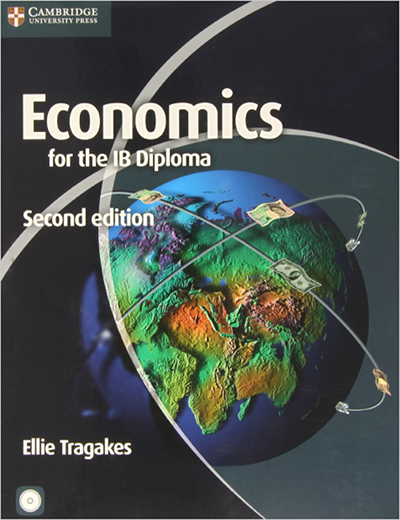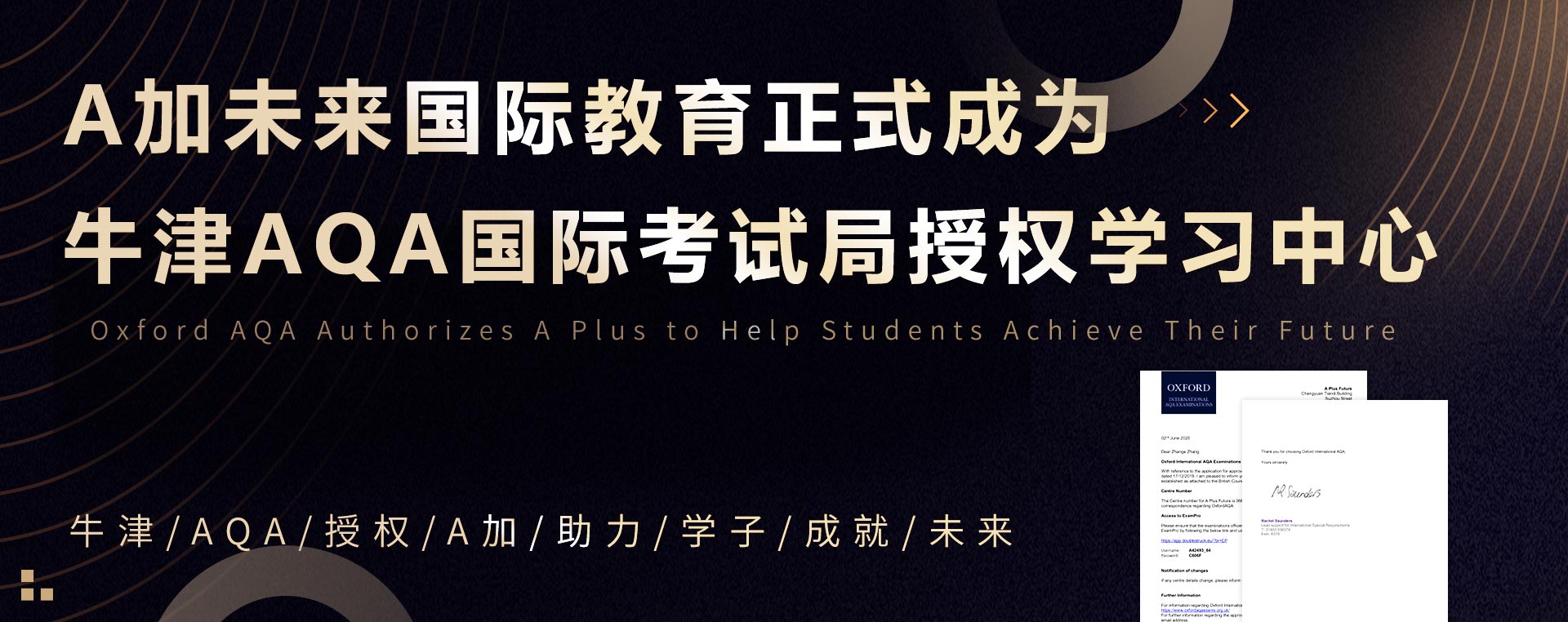IB经济学教材电子版及内容和目录大纲

IB经济学教材
Chapter 1 The fundations of economics经济学基础
1.1 Scarcity,choice and opportunity cost 稀缺性,选择和机会成本
1.2 Economics as a social science 经济学是一门社会科学
1.3 Central themes 中心主题
Section 1 Microeconomics 微观经济学
Chapter 2 Competitive markets:demand and supply 竞争市场:需求和供给
2.1 Introduction to competitive markets竞争市场概论
2.2 Demand需求
2.3 Supply供给
2.4 Market equilibrium:demand and supply 市场均衡:需求和供给
2.5 Linear demand and supply functions and market equilibrium (higher level topic) 线性供求函数与市场均衡(更高层次的话题)
2.6 The role of the price mechanism and market efficiency价格机制的作用和市场效率
Chapter 3 Elasticities弹性
3.1 Price elasticity of demand (PED)
3.2 cross-price elasticity of demand (XED)
3.3 Income elasticity of demand (YED)
3.4 Price elasticity of supply (PES)
Chapter 4 Government intervention 政府干预
4.1 Indirect taxes间接税
4.2 Indirect (excise) taxes:market outcomes, social welfare and tax incidence (higher level topic) 间接税(消费税):市场结果、社会福利和税收负担(更高层次的话题)
4.3 Subsidies补贴
4.4 Subsidies:market outcomes and social welfare (higher level topic) 补贴:市场结果和社会福利(更高层次的话题)
4.5 Price controls 价格管制
Chapter 5 Market failure 市场失灵
5.1 The meaning of market failure:allocative inefficiency 市场失灵的含义:配置低效率
5.2 Externalities:diverging private and social benefits and costs 外部性:区分私人和社会的收益和成本
5.3 Negative externalities of production and consumption 生产和消费的负外部性
5.4 Positive externalities of production and consumption 生产和消费的正外部性
5.5 Lack of public goods 公共物品的缺失
5.6 Common access resources and the threat to sustainability 共同获得资源和对可持续性的威胁
5.7 Asymmetric information (higher level topic) 信息不对称(更高层次的话题)
5.8 Abuse of monopoly power (higher level topic) 滥用垄断权利(更高层次的话题)
5.9 The problem of government failure (policy failure) (supplementary material)政府失灵的问题(政策失败)(补充材料)
Chapter 6 The theory of the firm I:Production,costs,revenues and profit (higher level topic)公司理论I:生产、成本、收入和利润(更高层次的话题)
6.1 Production in the short run:the law of diminishing returns 短期生产函数:边际效用递减规律
6.2 Introduction to costs of production:economic costs 生产成本概论:经济成本
6.3 Costs of production in the short run 短期生产成本
6.4 Production and costs in the long run 长期生产成本
6.5 Revenues 收入
6.6 Profit 利润
6.7 Goals of firms 公司目标
Chapter 7 The theory of the firm II:Market structures (higher level topic) 公司理论II:市场结构(更高层次的话题)
7.1 Perfect competition 完全竞争
7.2 Monopoly 垄断
7.3 Monopolistic competition 垄断竞争
7.4 Oligopoly 寡头
7.5 Price discrimination 价格歧视
Section 2 Macroeconomics 宏观经济学
Chapter 8 The level of overall economic activity 总体经济活动水平
8.1 Economic activity 经济活动
8.2 Measures of economic activity 经济活动指标
8.3 Calculations of GDP (higher level topic) GDP的计算(更高层次的话题)
8.4 The business cycle 商业周期
Chapter 9 Aggregate demand and aggregate supply总需求和总供给
9.1 Aggregate demand (AD) and the aggregate demand curve总需求曲线和总供给曲线
9.2 Short-run aggregate supply and short-run equilibrium in the AD-AS model短期总供给以及AD-AS模型中的短期均衡
9.3 Long-run aggregate supply and long-run equilibrium in the monetarist/new classical model长期总供给以及货币主义模型和新古典增长模型中的长期均衡
9.4 Aggregate supply and equilibrium in the Keynesian model凯恩斯模型中的总供给和均衡
9.5 Shifting aggregate supply curves over the long term 长期总供给曲线的变化
9.6 Illustrating the monetarist/new classical and Keynesian models 阐述货币主义、新古典主义和凯恩斯主义模型
9.7 The Keynesian multiplier (higher level topic) 凯恩斯乘数(更高层次的话题)
9.8 Understanding aggregate demand and the multiplier in terms of the Keynesian cross model (supplementary material,recommended for higher level)用凯恩斯交叉模型理解总需求和乘数(补偿材料,更高层次的建议)
Supplementary materials for Chapter 9
Chapter 10 Macroeconomic objectives I:Low unemployment,low and stable rate of inflation宏观经济目标I:低失业,低而稳定的通货膨胀率
10.1 Low unemployment 低失业
10.2 Low and stable rate of inflation 低而稳定的通货膨胀率
10.3 Topics on inflation (higher level topic) 通货膨胀话题(更高层次的话题)
Chapter 11 Macroeconomic objectives II:Economic growth and equity in the distribution of income 宏观经济目标II:经济增长和收入分配的公平性
11.1 Economic growth 经济增长
11.2 Equity in the distribution of income 收入分配的公平性
Chapter 12 Demand-side and supply-side policies 需求侧和供给侧政策
12.1 Introduction to demand-side policies 需求侧政策的介绍
12.2 Fiscal policy 财政政策
12.3 Monetary policy 货币政策
12.4 Supply-side policies 供给侧政策
12.5 Evaluating government policies to deal with unemployment and inflation 评估政府应对失业和通货膨胀的政策
Section 3 International economics 国际经济
Chapter 13 International trade 国际贸易
13.1 The benefits trade 贸易的好处
13.2 Free trade:absolute and comparative advantage (higher level topic) 自由贸易:绝对比较优势和相对比较优势 (更高层次的话题)
13.3 The World Trade Organization (WTO) 世界贸易组织
13.4 Restrictions on free trade:trade protection 自由贸易的限制:贸易保护主义
13.5 Arguments for and against trade protection 支持和反对贸易保护主义的论据
Chapter 14 Exchange rates and the balance of payments 汇率和国际收支平衡
14.1 Freely floating exchange rates 自由浮动汇率
14.2 Government intervention 政府干预
14.3 Calculations using exchange rates (higher level topic) 使用汇率计算(更高层次的话题)
14.4 The balance of payments 国际收支平衡
14.5 The balance of payments and exchange rates 国际收支平衡和汇率
14.6 Topics on exchange rates and the balance of payments (higher level topic) 关于汇率和国际收支平衡的话题(更高层次的话题)
Chapter 15 Economic integration and the terms of trade 经济一体化和贸易条件
15.1 Economic integration 经济一体化
15.2 Terms of trade (higher level topic) 贸易条件(更高层次的话题)
Section 4 Development economics经济发展
Chapter 16 Understanding economic development理解经济发展
16.1 Economic growth and economic development 经济增长和经济发展
16.2 Measuring economic development 经济发展指标
Chapter 17 Topics in economic development 经济发展专题
17.1 The role of domestic factors 国内因素的作用
17.2 The role of international trade barriers 国际贸易壁垒的作用
17.3 Trade strategies for economic growth and development 促进经济增长和发展的贸易战略
Chapter 18 Foreign sources of finance and foreign debt 外国资金和外资来源
18.1 The meaning of foreign sources of finance 外国资金来源的意义
18.2 Foreign direct investment and multinational corporation (MNCs) 外商直接投资和跨国公司
18.3 Foreign aid 外国援助
18.4 Multilateral development assistance 多边发展援助
18.5 The role of international debt 国际债务的作用
Chapter 19 Consequences of economic growth and the balance between markets and intervention 经济增长的结果以及市场和政府干预之间的平衡
19.1 Consequences of economic growth 经济增长的结果
19.2 Balance between markets and intervention 市场和政府干预之间的平衡
 喜欢 [0]
喜欢 [0] 相关推荐

- IB物理教材电子版及内容和目录大纲
IB课程教材 2021-11-25

- IB历史教材电子版及内容和目录大纲
IB课程教材 2020-03-27

- IB地理教材电子版及内容和目录大纲
IB课程教材 2020-03-27

- IB生物教材电子版及内容和目录大纲
IB课程教材 2019-07-01











